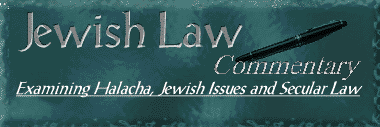

Western Walls
Rabbi Avi Shafran
Rabbi Avi Shafran
Since its liberation from Jordan in 1967, Jerusalem's Kotel Ma'aravi, or
"Western Wall", has been a spiritual magnet for Jews of all
denominations
and beliefs.
While no one monitors what prayer-books visitors use at the site or if
head-coverings are worn, the essential layout of the prayer-area there
reflects the requirements of halacha, or Jewish religious law, for a
synagogue: men on one side of a partition, women on the other; and women
do
not pray loudly enough for the men to hear them. Public services at the
holy
site have likewise been conducted in accordance with classical Jewish
tradition. It is a historic site – the remnant of the courtyard wall of
the
Second Holy Temple – and conduct there has accordingly reflected that
fact.
Over past years, though, "egalitarian" prayer-gatherings at the Kotel
have
been organized by non-Orthodox Jewish activists, predictably provoking
hurt
and anger (even, inexcusably, some violence) among the thousands of
traditional Jews present on the occasions. And a group of women – the
"Women of the Wall" – filed suit to allow it to conduct its own public
prayer session at the Kotel, in pointed contrast to how women have
prayed
there for thousands of years. Recently, Israel's High Court ruled that
the
government must accommodate that group.
Critics of the nontraditional prayer groups point out that the vast
majority
of the Wall's regular visitors are ardently Orthodox Jews. And that
whatever one may personally think of mixed-gender services and chanting
women, such things offend the Orthodox. Sensitive folk of good will,
after
all, would never think of entering a mosque with shoes on -- or a closed
space with a lit cigarette.
They note, too, that there is no limit to what could legitimately be
demanded were Jewish tradition jettisoned as the public norm at the
Kotel.
Would not "Messianic Jews" assert a right to mount crosses for their
services at the Wall? Might not anti-Zionist Jews wish to burn Israeli
flags there?
Proponents of the non-traditional groups essentially say "Let a thousand
flowers bloom" – the Kotel, they maintain, belongs to all Jews. Some
have
even proposed assigning separate parts of the Wall to different Jewish
groups.
That, at least to this Jew, would be a true Jewish tragedy in the
making.
Because for more than three decades, the Kotel has been a place –
perhaps
the only one in the world – where Jews of all affiliations and
persuasions
have regularly prayed side by side. That has been possible because of
the
good will of non-Orthodox Jews – Israelis and Westerners alike – who,
though they may opt for very different services in their own homes,
synagogues or temples, have accepted the "highest common denominator" of
Jewish tradition for the most Jewishly historic spot on earth.
Imagine, though, a "balkanized" Kotel, Orthodox Jews here, Reform there,
Conservative in the corner and a special women's group reading the Torah
at the far end. A sad real-time symbol of the state of our sad disharmony.
Could any truly caring Jew – of whatever prefix – really want to hammer
that
horrid, heavy nail into the coffin of Jewish unity?
______________________________________________
AM ECHAD RESOURCES
Rabbi Avi Shafran is director of public affairs for Agudath Israel of America and American director of Am Echad
Copyright © 1997-2008 by Ira Kasdan.
All rights reserved.
DISCLAIMER
|
Page 1 of 1 |